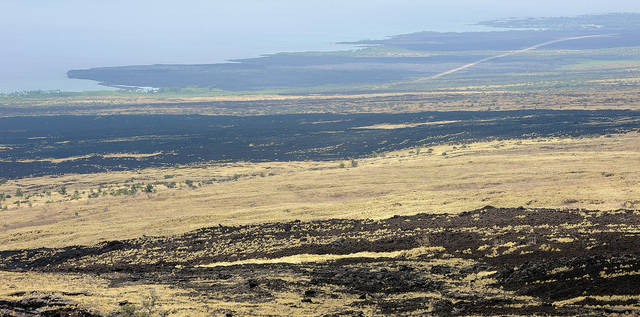Dr. Trauernicht gives background on the wildfire issue in Maui and across the state. Credit: The Maui News
Great article on the wildfire issue in Hawaii based on a recent talk by our close partner, Dr. Clay Trauernicht of University of Hawaii CTAHR Cooperative Extension / Pacific Fire Exchange. Also, important identification of the need for more funding for forest restoration and fire prevention by another close partner of ours, Chris Brosius, program manager of the West Maui Mountains Watershed Partnership.
From the Source:
The causes of most fires are unknown. Out of 12,000 recorded incidents statewide from 2000 to 2011, only 882, or about 7 percent, had a determined cause. Of those, 72 percent were accidental, which also means they’re preventable, Trauernicht said at Wednesday’s meeting in the Pacific Whale Foundation’s classrooms in Maalaea. That’s why part of the solution is public education on the risks of fire and how to avoid sparking a fire.
That’s why it’s important to find ways to change the landscape to less sensitive and less flammable vegetation, he said. Statewide, non-native grasses and shrubland cover 25 percent of the total land; in Maui County, it’s 36 percent.
“Rather than trying to weed wack or spray to kill the grass, maybe you should think about a more permanent strategy, like planting trees to shade those grasses out,” Trauernicht said. “In other words, converting that vegetation to something that’s less likely to burn.”
“We can really only do two things,” Trauernicht explained. “We can target ignitions . . . and the only thing we have direct control over is the vegetation.”
“A lot of people think about jumping right into fuels management,” he said. “One of the big things is just having access and safer conditions and water for firefighters. So I think some of the more immediate things is ensuring they have the safest conditions.”















